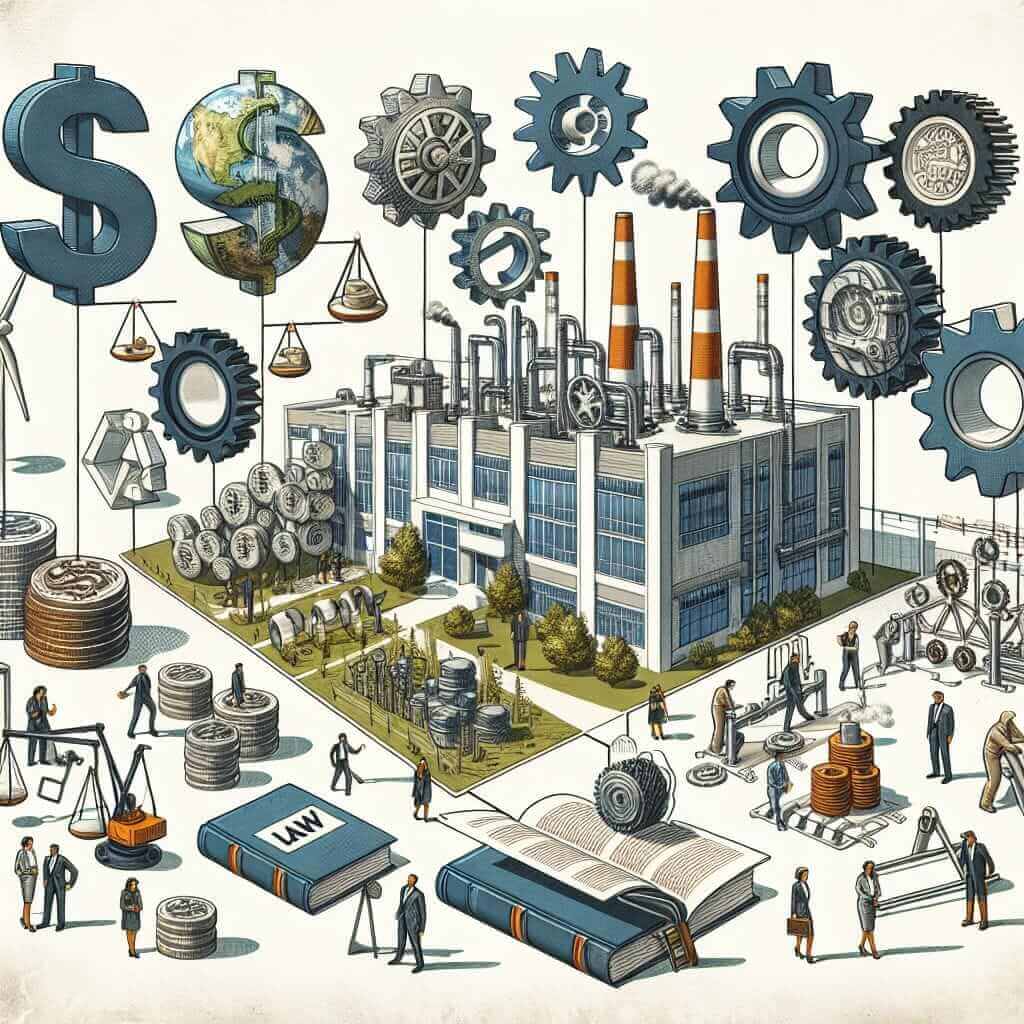The IELTS Reading section is known for its diverse topics, requiring examinees to comprehend and analyze complex texts. One recurrent theme is “energy efficiency in industrial sectors,” a subject that has significant implications for economics, environmental sustainability, and technological development. Given the increasing global focus on sustainable practices, understanding the challenges of achieving energy efficiency in industrial sectors is crucial. This article provides an in-depth look at these challenges, simulating an IELTS Reading passage while integrating SEO-friendly keywords to facilitate better comprehension and practice.
Nội dung bài viết
Main Content
IELTS Reading Practice Passage
Title: Challenges of Achieving Energy Efficiency in Industrial Sectors
Efforts to improve energy efficiency in industrial sectors face numerous challenges. These sectors, encompassing manufacturing, mining, construction, and more, are significant energy users. The barriers to achieving energy efficiency range from economic and technological to regulatory and behavioral factors.
Economically, the high upfront costs of energy-efficient technologies deter many industries. Investing in new equipment or retrofitting existing machinery can be prohibitively expensive, particularly for small and medium-sized enterprises (SMEs). These businesses often operate on thin margins, making long-term investments in energy efficiency challenging without immediate financial returns. Additionally, fluctuating energy prices further complicate investment decisions, as the uncertainty of cost savings makes businesses hesitant.
Technologically, industries often struggle with the integration of energy-efficient solutions into existing processes. Many industrial facilities use dated technology that is incompatible with modern energy-saving equipment. Furthermore, the complexity of industrial processes requires tailor-made solutions rather than one-size-fits-all approaches, necessitating significant research and development (R&D) efforts. The rapid pace of technological advancement also means that by the time an industry adopts a new technology, it might already be outdated.
Regulatory hurdles also play a critical role. Different countries and even regions within countries have varied regulations regarding industrial energy use. A lack of standardized policies creates confusion and inconsistency, hindering widespread adoption of energy-efficient practices. In some cases, regulations may not be stringent enough to drive change, while in others, overly complex compliance requirements discourage businesses from taking action.
Behaviorally, there is often resistance to change within industries. This resistance stems from a combination of a lack of awareness about energy efficiency benefits and the comfort of existing processes and routines. Even when the economic and technological barriers are addressed, convincing stakeholders to embrace new practices remains a significant challenge. Training and education programs are essential to foster a cultural shift towards energy efficiency.
In conclusion, achieving energy efficiency in industrial sectors is a multifaceted challenge. Overcoming economic, technological, regulatory, and behavioral barriers requires a concerted effort from governments, businesses, and technology providers. Investment in R&D, clear and consistent regulations, financial incentives, and educational initiatives are critical to driving progress towards a more energy-efficient industrial sector.
Questions
Multiple Choice
-
What is one of the main economic challenges for small and medium-sized enterprises (SMEs) when investing in energy-efficient technologies?
- A) Lack of interest from stakeholders
- B) High upfront costs
- C) Ineffective government policies
- D) Slow technological advancement
-
Why do technological challenges arise in integrating new energy-efficient solutions in industries?
- A) Outdated technology in use
- B) High cost of new technology
- C) Lack of regulatory support
- D) Insufficient R&D efforts
True/False/Not Given
-
Fluctuating energy prices make businesses hesitant to invest in energy-efficient technologies.
- True
- False
- Not Given
-
Training and education programs are not necessary for fostering a cultural shift towards energy efficiency.
- True
- False
- Not Given
Sentence Completion
- Regulatory hurdles in industrial energy use ____.
- Overcoming the challenges of achieving energy efficiency requires a concerted effort from ____.
Answer Keys
Multiple Choice Answers:
- B) High upfront costs
- A) Outdated technology in use
True/False/Not Given Answers:
- True
- False
Sentence Completion Answers:
- create confusion and inconsistency.
- governments, businesses, and technology providers.
Common Mistakes and Tips
A common mistake in the Reading section is misunderstanding the given text, leading to incorrect answers. For instance, confusing economic barriers with technological ones can skew an answer. To mitigate this, carefully read and distinguish between different types of challenges mentioned in the text.
Vocabulary
- Prohibitively (adv.): /prəˈhɪbɪtɪvli/ – to an extent that prevents something from being done or being possible.
- Retrofitting (v.): /ˈrɛtrəʊfɪtɪŋ/ – adding new technology or features to older systems.
- Incompatible (adj.): /ɪnkəmˈpætəbl/ – unable to work together harmoniously.
Grammar Point
Complex Sentences:
- Structure: Combination of independent and dependent clauses.
- Example: “Even when the economic and technological barriers are addressed, convincing stakeholders to embrace new practices remains a significant challenge.”
Conclusion
For a high score in the IELTS Reading section, understanding and analyzing diverse topics, such as the challenges of achieving energy efficiency in industrial sectors, is crucial. Practice reading various texts, focus on complex sentence structures, and enhance your vocabulary to excel.
 Challenges of Energy Efficiency in Industrial Sectors
Challenges of Energy Efficiency in Industrial Sectors
By consistently engaging with challenging texts and questions, you can improve your reading comprehension skills and achieve success in the IELTS exam.


